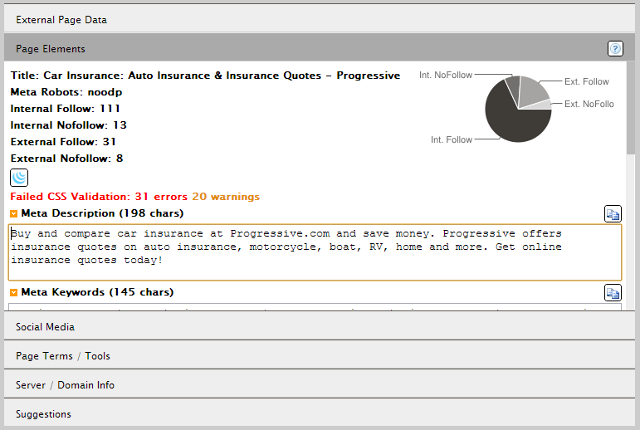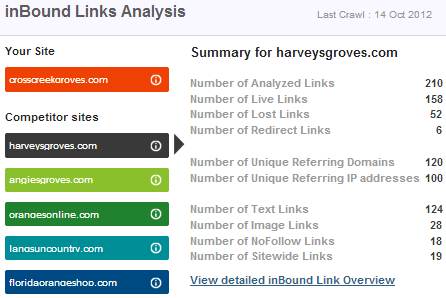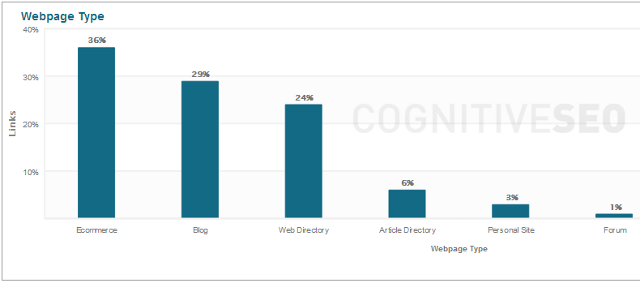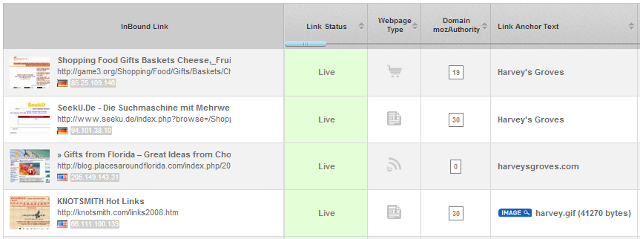Once you have decided on the keywords you are targeting for your search engine marketing campaign, your next task will be to do a little competitor analysis. This is where you look at the top websites in your industry to see what they are doing to rank highly in search. In this post, we’re going to look at defining your competitors in search and what you should look for to determine your next course of action.
Who Are Your Competitors
When working with a new client, they will supply a few pieces of information about their business including the keywords they would like to target and who their main competitors are. Of course, once their keywords are analyzed, the competitors the client thinks they have are usually not their true competitors in search.
As an example, let’s look at a client who owns local Italian restaurant. They would obviously be targeting the keywords Italian restaurant plus their city. When asked who their competitors are, they might list the Greek and Japanese restaurants across the street. But in search, neither of these “competitors” would be targeting Italian restaurant, hence they would not be client’s true competitors when it comes to search.
When it comes to competitor analysis for search, your competitors will always be the sites ranking for the keywords you are targeting. No other considerations should come into play.
To find out your competitors:
- Start with the main keywords you want to target in your search engine marketing campaign.
- Search those keywords in Google.
- List the top sites ranking for those keywords. If you’re currently ranking at number four, just look at the top three sites ahead of you. if you’re not even on the first page, you might want to consider looking at the sites in the top ten.
- Ignore sites like Wikipedia or other similar sites. People looking to purchase products or services will skip their listings anyway.
The Goal of Competitor Analysis
Your goal when doing competitor analysis should be to determine various search strategies that your competitors are doing to rank well. Then take all of those strategies, choose the best ones (and the ones that don’t violate Google Webmaster Guidelines), and apply them to your own search engine marketing campaign.
What you may find is that Competitor A is doing one thing well, Competitor B is doing something else well, and Competitor C is doing yet another thing well. By combining the good strategies from all three, you will have a much better chance of boosting your rankings.
What You Should Look For in Competitor Analysis for Search
Once you have determined who your main competitors in search are, your next goal is to analyze how they made it to the top of search results. Here are some areas to look at and tools to use.
On-Site SEO
First off, take a look at the competitor’s on-site SEO. You can do this quickly by using a free extension called SEO Site Tools for the Google Chrome browser.
When you’re viewing the competitor’s homepage and internal pages, click on the magnifying icon to see the following under the Page Elements section.

- SEO title, meta description, and meta keywords
- Anchor tags for internal links
- Bold and italicized text
- Image alt tags
- Header tags (H1, H2, H3, etc.)
This can give you a quick glance into how much keyword optimization is being done and how on the homepage and other pages that rank well in search for a particular keyword. You can also use this tool’s Suggestion section to see what it would suggest modifying on the competitor’s site so you can apply those tips to your own website.
Link Building
Link building is another area you will definitely want to analyze for each of your competitors. Using the inBound Link Analysis tool, you can see at a glance how you stack up to your competitors in the link building arena.

You can then deep dive into each competitor’s backlink profile to just about everything you need to know about their link building strategy including (but not limited to) the following.

- Anchor text in a text cloud format.
- Ratio of links to the homepage vs. deep links.
- Nofollow vs. dofollow links.
- Links in content.
- Sitewide links.
- Webpage type.
- Positioning of link on page.
- Website categories of link partners.
And finally, you can look through the detailed backlink profile itself and sort/filter by details including webpage type, mozAuthority, anchor text, PageRank, and many other metrics.

Again, remember that your goal is to get the best backlinks of your competitors. Consider looking in-depth at several competitor’s backlink profile, seeing the best links that each of them get, and attempt to attain the same types of links for your own website.
Paid Advertising
Last, but not least, find out of if your competitors are using paid search like AdWords. To do that, just go to SEMrush and enter the competitor’s domain. This tool will list the competitor’s organic keyword rankings as well as the keywords they are using for paid ads.

If you notice that a lot of the top competitors are using paid search, then you might want to consider it as well, at least until you have a good place in organic search rankings. Plus you might discover some other valuable keywords to target in the process.
Additional Things to Consider
While on-site SEO, link building, and paid search are the main strategies that help a website rank well, they are not the only ones. Be sure to also add in analysis of your competitor’s content strategy as well as social media to get a full picture of what your competitors are doing online. If you can take the best of their search, content, and social media marketing strategies and apply it to your own website, then you should be well on your way to achieving the rankings you want to beat your competitors!

 Site Explorer
Site Explorer Keyword tool
Keyword tool Google Algorithm Changes
Google Algorithm Changes

Good topic, Kristi. I recently did a guest post exploring some social-media-based tactics. I think for local or national brands, there is opportunity to be more diligent or strategic in relating to customers.
Not many verticals enjoy the “they can choose any color as long as it’s black” mentality. Consumers have choices, sometimes not realizing until one competitor expresses more interest or customer service.
There was just an article on inbound where a service provided a free trip, based on the undelivered grant of a competitor initiated by a consumer. It’s an isolated event, but the sentiment is powerful. One brand capitalized on the limitations of the competition.
It’s kind of like that joke, as far as the target market, you don’t have to run faster than the bear, just your companion. You don’t need a perfect marketing endeavor, just one operating/addressing the market better than the competition.
Very true Anthony – and I love that quote about outrunning your companion. I think every brand looking to do well with online marketing should focus on building themselves up in search and social (local too if applicable) because you never know when Google might change their policies and your social traffic will be all you have left. Or when Facebook might can your page and then search traffic will be all you have left.